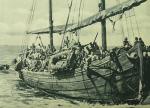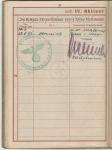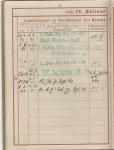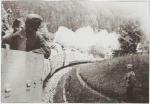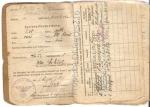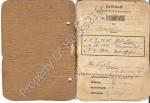-
Posts
3,603 -
Joined
-
Last visited
-
Days Won
8
Content Type
Profiles
Forums
Blogs
Gallery
Events
Store
Everything posted by hucks216
-
During the entire invasion of Crete, 5 GJD reported 20 Officers & 305 men killed and 18 Officers & 488 men missing with the vast majority of these missing men being those lost at sea. Vislmeier's name can be seen on this memorial list for the Maleme War Cemetery... http://denkmalprojekt.org/misc_laender/maleme_iii_btl_geb_jaeg_rgt100.htm This is one of the caiques that III/GJR 100 tried to cross to Crete in and it is easy to see how much of a sitting duck they would of been in face of a proper naval force..
-
Part of the plan was for a large force of III./GJ Rgt 100 to be shipped across to Crete from Greece in 2 flotillas of caiques and two small steam ships with a minimal escort of Italian destroyers, namely the Lupo protecting one force and the Sagittario protecting the other. During the afternoon of 20 May, allied aerial reconnaissance located a flotilla of twenty-five caiques travelling from Piraeus towards their advance base at Milos which they reached in the evening. The next leg of their voyage was to sail to Maleme, on the northwest coast of Crete. The first convoy set off from Milos on the night of the 21/22nd May 1941 and this was the force escorted by Lupo. Approximiately 17miles north of Maleme this force was intercepted by Force D, commanded by Rear Admiral Glennie who was flying his flag in the light cruiser HMS Dido, in company with 2 other light crusiers and 4 destroyers. Despite a gallant defence by the heavily outnumbered Lupo the convoy stood little chance and of the approximately 20-25 caiques (carrying 2,331 troops) half were sunk by Force D, with the force hunting down the caiques and sinking them without giving any mercy to the mountain troops aboard them. The convoy led by Sagittario also attempted to make the crossing but was discovered in the forenoon of the 22nd May by Force C led by Rear Admiral King flying his flag in the light crusier HMS Naiad, and in company with 3 more light crusiers and 4 destroyers. However, due to the hours of daylight the Luftwaffe was able to play a part and after only 2 caiques were sunk out of a force of 30 (approx 4,000 troops), Force C was forced to withdraw. However this second flotilla of caiques also returned to port with all future reinforcements from 5 GJD being made by air. III/GJ Rgt 100 had effectively been wiped out by the Royal Navy.
-
In October 1940 Gebirgsjager Rgt 100 was used to form a new mountain division, the 5 GJD in the Tirol region. Three months after this reorganisation, Vislmeier was reassigned within the regiment, joining the 14 (M.G.) Kompanie with which he remained during the rest of his life. For the push down the Balkans, 5 GJD saw action in Greece attacking and breaking through the Metaxas Line from their starting positions in Bulgaria. After the conquest of Greece, GJ Rgt 100 commenced security duties until it was assigned for the invasion of Crete as a reinforcing force for the initial drop of paratroopers.
-
Not a WP chock full of entries but a nice understated one that relates to an often forgotten element of the invasion of Crete, namely the attempt to reinforce the airborne troops by a seaborne element which was intercepted by a far superior Royal Navy task force with the inevitable consequences. Josef Vislmeier, born on the 1st March 1908 in Burghausen was originally a member of the 13 Kompanie of Gebirgsjager Rgt 100 of the 1 Gebirgsjager Division, joining that unit in July 1940 after the Western campaign and with the rest of the unit commenced security duties in the recently conquered terrortories in France and Belgium.
-
Nice example. When you say 'based in Dresden' do you mean that as in the same way that Heer units had depots in certain Wehrkreis while the main units were actually located in Russia (in the Zugwach case protecting trains through partisan held areas while the admin 'tail' remained in Dresden) etc or would he of only manned trains running out of Dresden checking passes etc with other Zugwach units responsible for the train when it went past the German border?
-

Heer Armoured Train Soldbuch
hucks216 replied to hucks216's topic in Germany: Third Reich: Research, Documentation & Photographs
Thanks for the comment. In a way it can be a bonus if people concentrate on the so called glamour units as that then keeps the price of such hidden gems as this relatively low, or people pass them by without a second glance leaving them for others to find and snap up. -

Heer Armoured Train Soldbuch
hucks216 replied to hucks216's topic in Germany: Third Reich: Research, Documentation & Photographs
And finally - 18th September 1943 - PZ 64 hit a mine throwing several cars off the tracks, but these were only slightly damaged... -

Heer Armoured Train Soldbuch
hucks216 replied to hucks216's topic in Germany: Third Reich: Research, Documentation & Photographs
-

Heer Armoured Train Soldbuch
hucks216 replied to hucks216's topic in Germany: Third Reich: Research, Documentation & Photographs
-

Heer Armoured Train Soldbuch
hucks216 replied to hucks216's topic in Germany: Third Reich: Research, Documentation & Photographs
And finally 3 pictures of PZ 64 taken from the above mentioned book, which really is the bible when it comes to the topic (the images are of a better quality in the book then shown here). -

Heer Armoured Train Soldbuch
hucks216 replied to hucks216's topic in Germany: Third Reich: Research, Documentation & Photographs
-

Heer Armoured Train Soldbuch
hucks216 replied to hucks216's topic in Germany: Third Reich: Research, Documentation & Photographs
-

Heer Armoured Train Soldbuch
hucks216 replied to hucks216's topic in Germany: Third Reich: Research, Documentation & Photographs
-

Heer Armoured Train Soldbuch
hucks216 replied to hucks216's topic in Germany: Third Reich: Research, Documentation & Photographs
Towards the end of 1944 and for 1945 PZ 64 saw combat against both partisan & Red Army forces in the South East of Europe and in the final weeks of the war tried to transfer to Austria, reaching Pernegg via Graz on the 8th May 1945 having hit a mine on the 8th April and coming under Russian artillery fire numerous times. At midnight on the 8th May 1945 Sieg disbanded the unit. Lohleit survived the war and was taken prisoner as shown by these post war documents. -

Heer Armoured Train Soldbuch
hucks216 replied to hucks216's topic in Germany: Third Reich: Research, Documentation & Photographs
More then you think - the German Wehrmacht had loads and they were used in all parts of Europe. In fact many countries had them, including Russia, and I think on the first day of the war a Polish armoured train was used to defend against a German panzer unit. The middle & bottom signatures seen here belong to Werner Sieg who was the commanding officer of Panzerzug 64 from its entry into service until the wars end. I find it interesting that someone with a rank of Oberleutnant was entrusted with the command of such a large unit. -

Heer Armoured Train Soldbuch
hucks216 replied to hucks216's topic in Germany: Third Reich: Research, Documentation & Photographs
In Wolfgang Sawodny's superb book German Armoured Trains 1904-1945 (ISBN: 978-0-7643-3523-5). the actions of PZ 64 are known through the entries in a war diary written by a crew member of one of the trains Panhard armoured cars. During his time with PZ 64 Lohleit saw plenty of action and incidents, including on the 31st August 1943 a prisoner excahnge in which 22 German soldiers were exchanged for 60 partisans. The train was also used in Unternehmen Margarethe (the invasion of Hungary in March 1944) as part of Kampfgruppe Brauner, a component of XXII Gebirgs-Armee-Korps. On 15th May 1944, Lohleit won the EK II and in the weeks prior to this PZ 64 had been involved in fighting against partisan occupied areas & villages near Morovic so it is likely that Lohleit won his EK for actions taken during these fights. As can be seen, Otto Lohleit also won the General Assault Badge in January 1945. Taken from the above mentioned book: "On September 1st 1944 the crew of PZ 64 suffered considerable losses in a low-flying air attack on the Ruma railroad station, but the combat train was only slightly damaged." And again: "On 27 November the armoured train took part with its artillery & AA guns in the fighting around Fuenfkirchen, which lasted until the end of the month; then until 4th December there was withdrawal fighting around Szentloerensz & Szigetvar. From there the train moved on to Barcs the next day, but did not cross the Drava in the direction of Croatia, but was transferred northward again the next day to the Somogyszob region. East of there the Russian advance could be held and the front stabilized. PZ 64 was used for artillery support, mostly in Otvoskonyi, with an advanced observer in Beleg. This activity lasted until February 15th 1945." -

Heer Armoured Train Soldbuch
hucks216 replied to hucks216's topic in Germany: Third Reich: Research, Documentation & Photographs
After serving with a few replacement & training units he was assigned to the armoured trains, starting with a Panzerzug Ersatz Abteilung at Rembertow before being posted to Panzerzug 64. PZ 64 was established in October 1942 and was ready for action in June 1943 where it was sent to the Croatia & Serbia region, an area it was to spend most of its war. Rembertow, near Warsaw, was home to the training camp for armoured train units and consisted of barracks and firing ranges for the trains. The earliest date in the soldbuch with regards to Panzerzug 64 is in fact October 1942 - entry on the uniform issue page (not shown here) - so Lohleit was with Pz 64 from the very start of its life. -

Heer Armoured Train Soldbuch
hucks216 replied to hucks216's topic in Germany: Third Reich: Research, Documentation & Photographs
-

Heer Armoured Train Soldbuch
hucks216 replied to hucks216's topic in Germany: Third Reich: Research, Documentation & Photographs
-
Here is a soldbuch to a unit that isn't often seen, namely an armoured train - Panzerzug - unit, in this case PZ 64. Otto Lohleit begane the war with a heavy artillery unit (s.Art.Abt 506) which saw fighting at the fortress of Modlin. During this fighting Lohleit received splinter injuries which saw his admittance into the Lazarett system where he was to remain until early October 1939, before being re-admitted in early 1940.
-

Does the Royal Navy miss the Ark Royal?
hucks216 replied to IrishGunner's topic in Modern Campaigns and Conflicts
I think it is more a case of asking does the government regret making such stupid and rash decisions based more on finance then the strategic implications. As you say, there is Malta (although I believe the Maltese authorities are not keen on aircraft on armed operations sharing a civilian runway, hence the use of Italy for the Typhoons) but the use of either of those countries (and Cyprus) is a happy accident. The government needs to ask itself what would they of been able to do if this action had of happened in a country like Nigeria, Angola or Gabon over on the west coast of the continent where the nearest UK airbase is approx 1600-1700 miles away on Ascension Island, where you would have to stage all facets of air operations from on a limited infrastructure. You know you are stretching things if your fighter bombers (as opposed to strategic bombers such as the USAF B-2 Spirit) have to make a round trip of 3000 miles just to drop 2 or so bombs! -
Great little set to a unit that has become more desireable to some collectors since the release of Doug Nash's book 'Victory Was Beyond Their Grasp'. As to his being captured, I wonder if his wounding in July saw him being posted elsewhere after a brief stay in the lazarett system? Or maybe he found an opportune moment to slip away in the dying weeks of the war before the Division were caught in the Ruhr Pocket (can't imagine the authorities would of gone easy on him for that if he had of been caught considering one of his duties would of been to catch people like that). i would say the wounding & subsequent posting would be a good bet.
-
Nice little set. Taken from Fire Brigades by Kamen Nevenkin - On 23 February [1945] the American troops mounted a massive offensive in Juelich area (northeast of Aachen) (Operation Grenade) and on the same day succeeded in crossing the Ruhr. The [9 Panzer] Division was immediately moved to the front and by 24 February was committed to fighting between Juelich and Dueren. It offered fierce resistance, but was unable to withstand the enemy pressure and began gradually to retreat to the east. In the first days of March, 9 PD was involved in heavy fighting in the vicinity of Cologne. The city of Cologne itself was lost on 6 March and on the next day the division was deployed to its north. It does go on to say that when the Americans formed the Remagen bridgehead some elements of 9PD (probably the armoured elements only) were transferred south to attack the bridgehead but some elements remained in the Cologne area.



